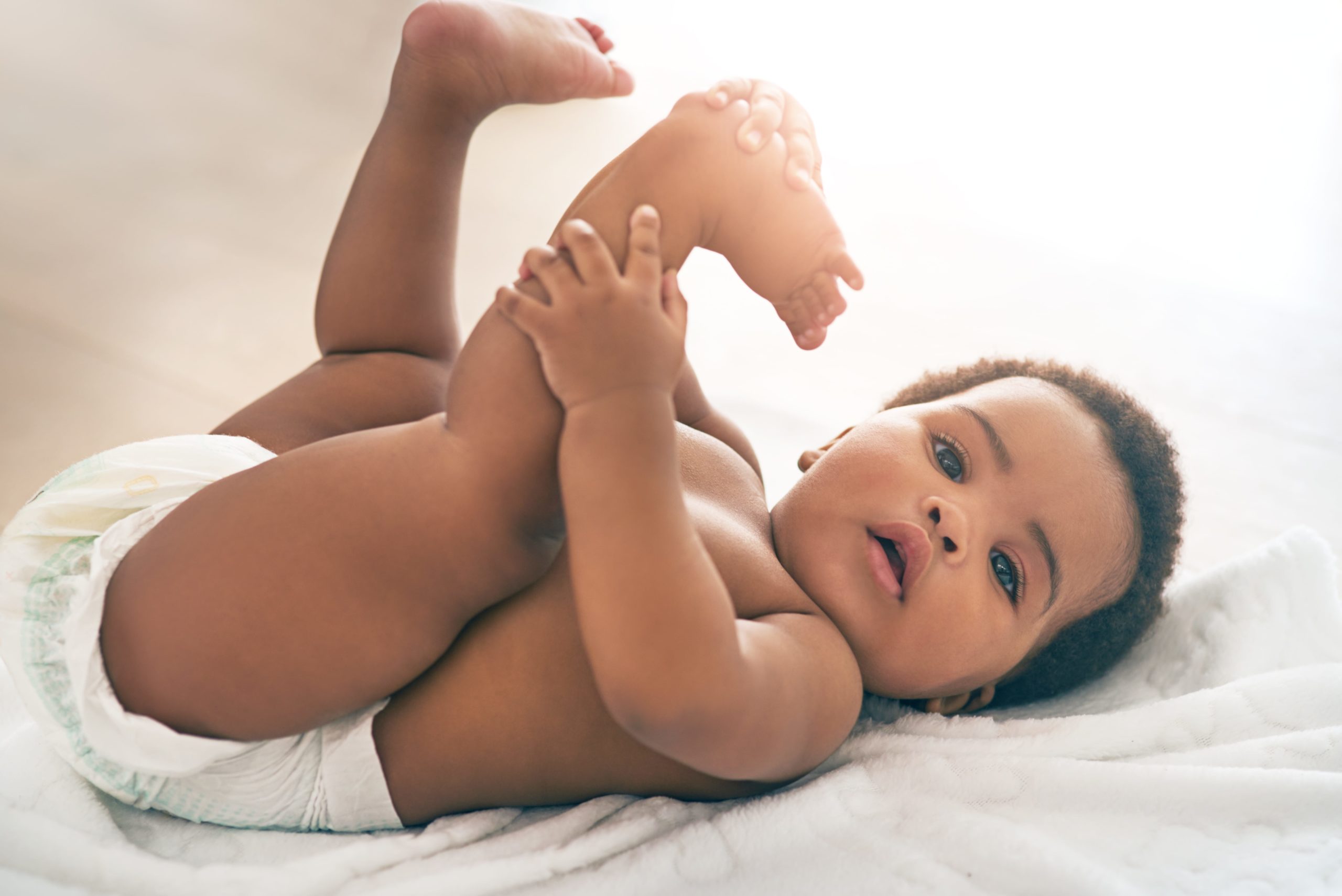
• Moves eyes to follow sounds or objects moving in front of his face
• Eats every few hours and sucks on fingers or pacifier in-between feedings
• May be startled by loud noises and enjoys gentle music
• May cry and be fussy but enjoys cuddling and listening to you
• Develops trust in you if picked up whenever he cries; cannot be spoiled under 6 months of age
• Starts to learn about the world
• Waves, kicks and squirms when lying on back
• Lifts head up when on stomach
• Turns to you and smiles when sees or hears you
• Smiles, gurgles and makes other sounds
• Sucks on thumb or pacifier to calm self and learn about world
• Has real tears
•Senses parents’ moods
• Holds head up without bobbing it around
• Reaches for and grasps small toys or hair
• Recognizes parent’s voice and other sounds heard often
• Smiles at parents and other family members
• Coos and babbles, says “oo,” “ah,” and other vowel sounds
• Rests on forearms while on stomach
• Picks up head and chest when on stomach
• Rolls over front-to-back and back-to-front
• Reaches for nearby toys
• Brings hands together
• Squeals when happy; repeats vowel sounds
• Teeth start to come in
• May sleep through the night
• Sits without help
• Feeds self with fingers and sips from cup
• Tries to imitate sounds of people talking
• Looks for dropped items
• Moves toys from one hand to other
• Stands for about five seconds while holding on to something
• Gets upset when you leave
• May be stubborn and possessive of toys
• Sits with no support
• Plays pat-a-cake or other clapping games
• Looks for hidden objects
• Pulls self to standing position and may walk holding on to furniture
• Uses forefinger and thumb to grasp objects
• Repeats sounds over and over; may say a few words
• Begins to understand easy directions and gestures
• Shows fear of new people